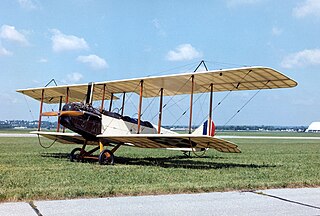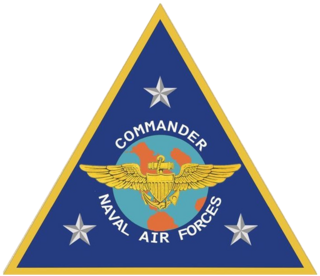Related Research Articles

Owls are birds from the order Strigiformes, which includes over 200 species of mostly solitary and nocturnal birds of prey typified by an upright stance, a large, broad head, binocular vision, binaural hearing, sharp talons, and feathers adapted for silent flight. Exceptions include the diurnal northern hawk-owl and the gregarious burrowing owl.

Dentition pertains to the development of teeth and their arrangement in the mouth. In particular, it is the characteristic arrangement, kind, and number of teeth in a given species at a given age. That is, the number, type, and morpho-physiology of the teeth of an animal.

According to the International Civil Aviation Organization (ICAO), a runway is a "defined rectangular area on a land aerodrome prepared for the landing and takeoff of aircraft". Runways may be a human-made surface or a natural surface. Runways, taxiways and ramps, are sometimes referred to as "tarmac", though very few runways are built using tarmac. Takeoff and landing areas defined on the surface of water for seaplanes are generally referred to as waterways. Runway lengths are now commonly given in meters worldwide, except in North America where feet are commonly used.

A heliport, sometimes termed a vertiport, is a small airport suitable for use by helicopters and various types of vertical lift aircraft. Designated heliports typically contain one or more touchdown and liftoff areas and may also have limited facilities such as fuel or hangars. In some larger towns and cities, customs facilities may also be available.

The Etrich Taube, also known by the names of the various later manufacturers who built versions of the type, such as the Rumpler Taube, was a pre-World War I monoplane aircraft. It was the first military aeroplane to be mass-produced in Germany.

The Helsinki Olympic Stadium, located in the Töölö district about 2.3 kilometres (1.4 mi) from the centre of the Finnish capital Helsinki, is the largest stadium in the country. The stadium is best known for being the centre of activities in the 1952 Summer Olympics. During those games, it hosted athletics, equestrian show jumping, and the football finals.

An aircraft fairing is a structure whose primary function is to produce a smooth outline and reduce drag.

The elevation of a geographic location is its height above or below a fixed reference point, most commonly a reference geoid, a mathematical model of the Earth's sea level as an equipotential gravitational surface . The term elevation is mainly used when referring to points on the Earth's surface, while altitude or geopotential height is used for points above the surface, such as an aircraft in flight or a spacecraft in orbit, and depth is used for points below the surface.
The 1911 Curtiss Model D was an early United States pusher aircraft with the engine and propeller behind the pilot's seat. It was among the first aircraft in the world to be built in any quantity, during an era of trial-and-error development and equally important parallel technical development in internal combustion engine technologies.
The Dassault LOGIDUC – sometimes spelled Logiduc in French and LogiDuc in English – was an autonomous industrial program launched in 1999 by the French aircraft manufacturer Dassault Aviation in view to develop its UAV design capacities. This French programme eventually led to the creation of the Dassault-Sagem Tactical UAV company and to the European "combat drone" project nEUROn.
Cecil Airport is a public airport and commercial spaceport located in Jacksonville, Florida, United States. It is owned by the Jacksonville Aviation Authority and services military aircraft, corporate aircraft, general aviation, and air cargo. The Florida Army National Guard's primary Army Aviation Support Facility and the U.S. Coast Guard's Helicopter Interdiction Tactical Squadron (HITRON) are also located here, the former operating CH-47 Chinook, UH-60 Blackhawk, UH-72 Lakota and C-12 Huron aircraft, and the latter operating the MH-65C Dolphin helicopter.

The African giant shrew is a species of white-toothed shrew. It also is known as, Mann's musk shrew, Euchareena's musk shrew, or Olivier's shrew. It is native to Africa, where it has a widespread distribution and occurs in many types of habitat. Its natural habitats are subtropical or tropical dry forest, subtropical or tropical moist lowland forest, subtropical or tropical moist montane forest, dry savanna, moist savanna, arable land, rural gardens, urban areas, and heavily degraded former forest. In the Nile Valley it is found near human habitation, where it is considered to be a pest. It is a common species and is listed by the International Union for Conservation of Nature as being of "least concern".

Whitaker's shrew is a species of mammal in the family Soricidae. It is found in Western Sahara, Algeria, Morocco, Tunisia. Its natural habitats are subtropical or tropical dry shrubland, rocky and sandy coasts. It is a fairly common species and the International Union for Conservation of Nature has rated its conservation status as being of "least concern".

The Standard J is a two-seat basic trainer two-bay biplane produced in the United States from 1916 to 1918, powered by a four-cylinder inline Hall-Scott A-7a engine. It was constructed from wood with wire bracing and fabric covering. The J-1 was built as a stopgap to supplement the Curtiss JN-4 in production.

The Commander, Naval Air Forces is the aviation Type Commander (TYCOM) for all United States Navy naval aviation units. Type Commanders are in Administrative Control (ADCON), and in some cases Operational Control (OPCON) of certain types of assets assigned to the Pacific and Atlantic Fleets. AIRFOR is responsible for the materiel readiness, administration, training, and inspection of units/squadrons under their command, and for providing operationally ready air squadrons and aircraft carriers to the fleet.
Grant Aviation is a regional airline that serves the town of Kenai, the Yukon-Kuskokwim Delta, Bristol Bay, and the Aleutian Chain in Alaska, United States. The airline was formed in 1971 as Delta Air Services based in Emmonak. The current owners are Bruce McGlasson and Mark "Woody" Richardson, who purchased the airline in 2004. The company slogan is "Fly Easy, Fly Grant."
The Gray Owl Award is presented to the senior naval flight officer (NFO) on continuous active duty in the U.S. Navy or Marine Corps who has held that designation for the longest period of time.
Airport surveillance and broadcast systems are a set of runway-safety tools that display aircraft on and near an airport.
I-372 was an Imperial Japanese Navy Type D1 transport submarine. Completed and commissioned in November 1944, she served in World War II and was sunk in July 1945.